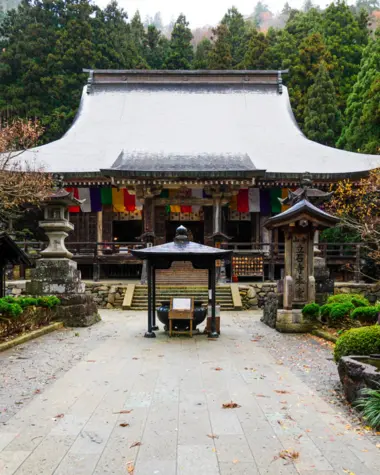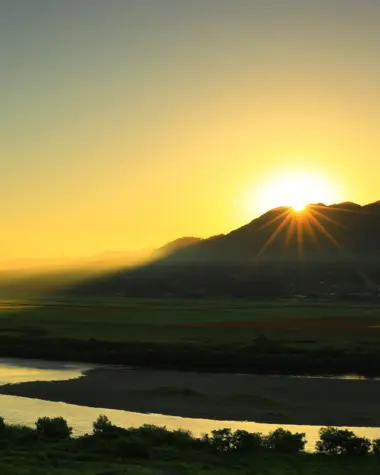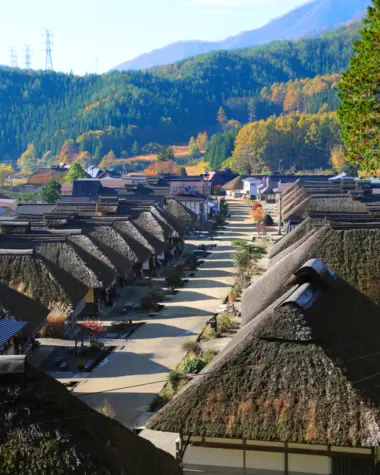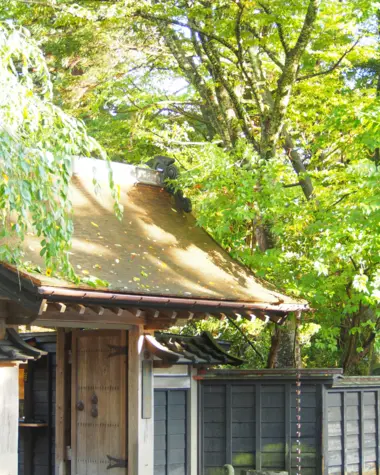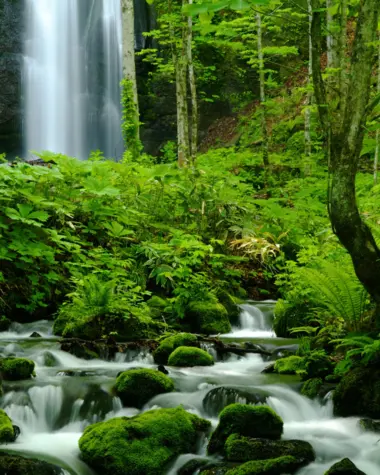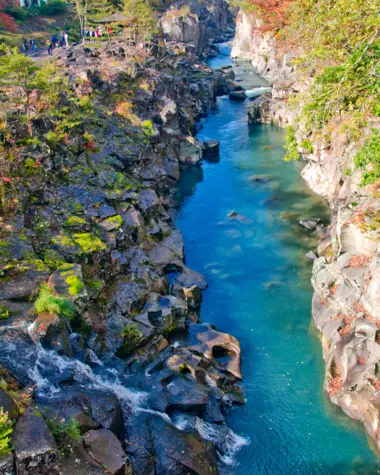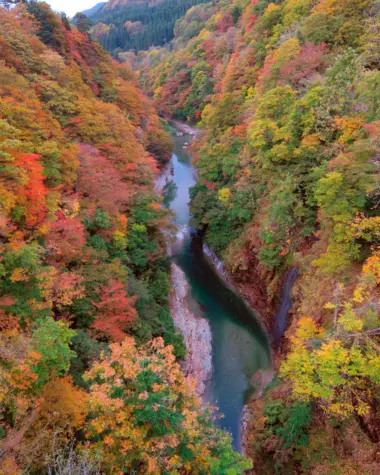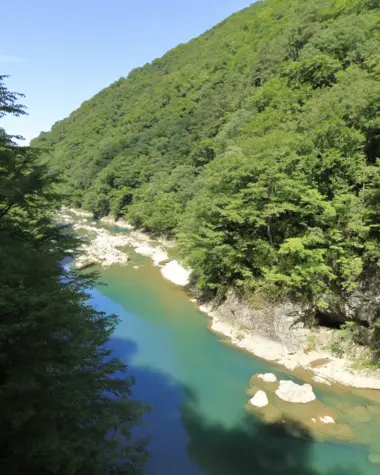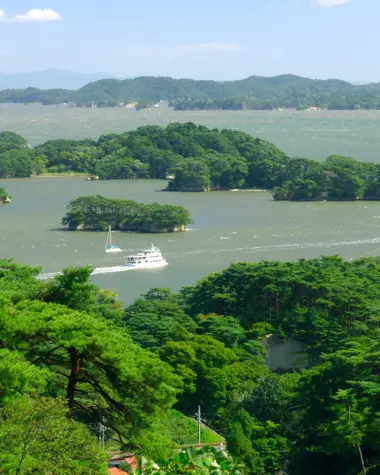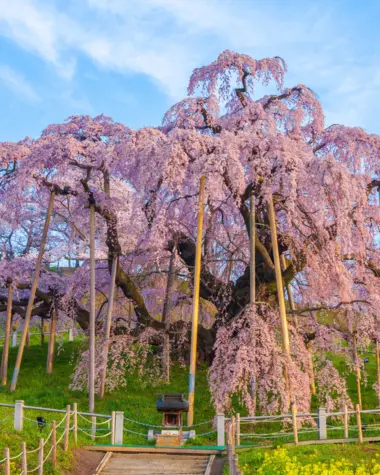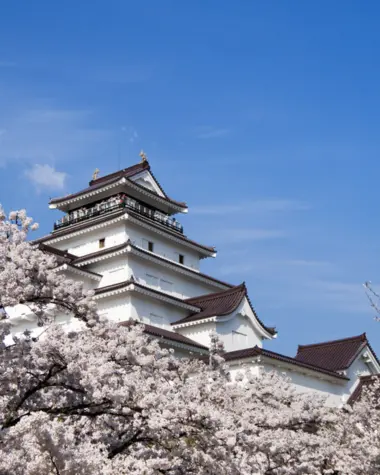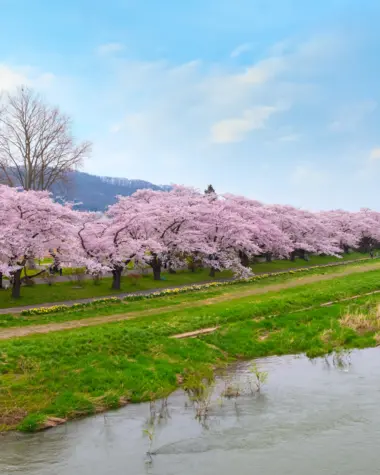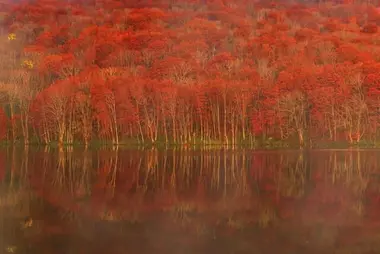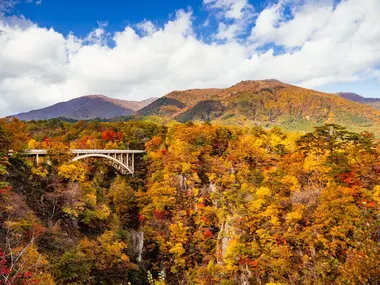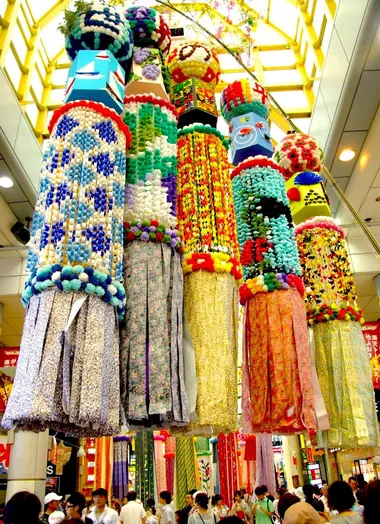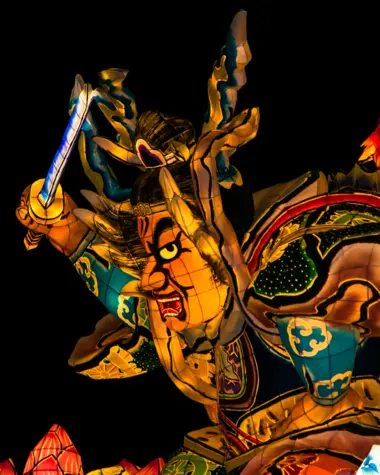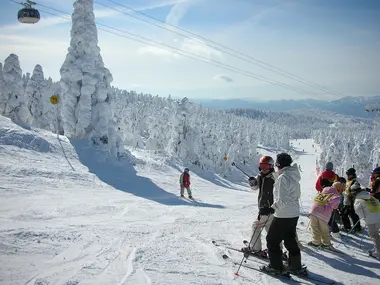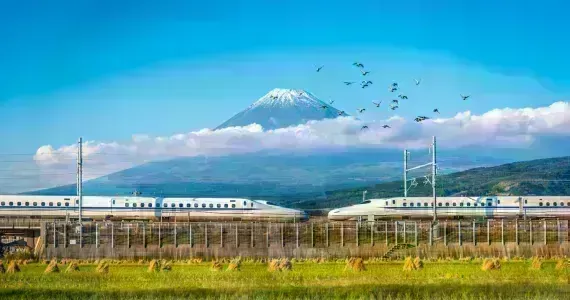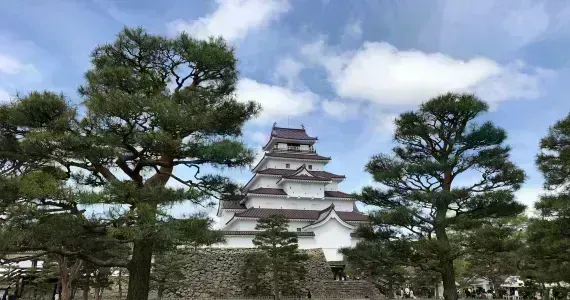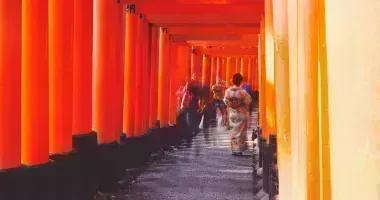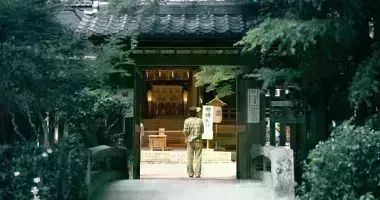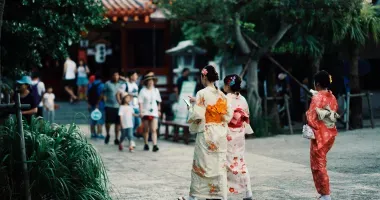Tohoku Region Travel Guide
Japan, generally associated with bustling cities such as Tokyo and Kyoto, provides visitors with an array of experiences. Tohoku, on the other hand, is a hidden gem waiting to be discovered for those looking for a quieter, more traditional side of Japan. Located in the northern area of Honshu island below Hokkaido, the Tohoku region has a population of 8.5 million inhabitants and is composed of six prefectures: Akita, Aomori, Fukushima, Iwate, Miyagi, and Yamagata.
Visiting Tohoku allows discovering various traditional activities. Among them, pilgrimage to Dewa Sanzan, 3 sacred mountains located in Yamagata Prefecture, or experience the natural onsen of Ginzan, perfect for rejuvenation.
With its historical as well as modern relevancy, Tohoku is a region not to be missed during your visit to Japan!
Japanese traditional beauty in Tohoku
Tohoku is packed with places full of history: Buddhist temples, Shinto shrines, traditional wooden houses, and feudal castles. These will let you discover the Japan of the past, the time of the samurais, and the clan wars.
In Iwate prefecture, the temples, gardens, and archeological sites of the city of Hiraizumi, a UNESCO World Heritage Site, are full of stories. Formerly the capital of the northern part of Honshu Island, it is now a testimony to the past of the Tohoku region.
The old town of Kakunodate has remained almost unchanged since its creation in the 17th century. Its samurai district, one of the best preserved in Japan, is the witness of an important page of the traditional aspect of Japan. An opportunity to go back to the past!
Founded in 860, the Yamadera temple is nestled on the mountainside of Yamagata Prefecture and offers a breathtaking view of the green valley below and the surrounding mountains. Not to be missed during your visit to the area.
Finally, Ôuchi-juku village in Fukushima Prefecture has been very popular since the Edo period. Its ancient thatched houses have been protected until today, giving the village a time capsule appearance.
We recommend visiting these places to witness the rich history of the region
The nature of northeastern Japan
Composed of six of the most rural prefectures in Japan, the Tohoku region is blessed with great nature, ideal for walking and hiking. Get away from the big cities for a while and take a breath of fresh air north of the many mountains by discovering the national parks and other natural beauties offered by the region.
Located about 40 minutes by train from Sendai in Miyagi Prefecture, Matsushima Bay is home to more than 200 small rocky and wooded islands. It is considered one of the three most beautiful scenic spots in Japan on par with Amanohashidate, the "bridge of heaven" of Chugoku, and the very famous Miyajima.
Tohoku region has many mountains, valleys, and rivers. It is there that you can admire the most beautiful gorges of Japan: Oyasu Gorge, Dakigaeri Gorge, or Genbikei and Geibikei Gorge.
The most impressive one is located in Aomori prefecture, where a river taking its source in Towada lake has formed Oirase Gorge. Surrounded by lush woods and dotted with waterfalls, this place has inspired painters and poets for centuries. It is a particularly recommended place for hiking and biking enthusiasts.
Where to see the cherry blossoms in Tohoku?
Cherry blossoms are one of the most distinctive symbols of Japan and their arrival at the end of winter brings a festive wind to the country every year! Their blossoming kicks off Hanami, a Japanese tradition of picnicking with family, friends, or colleagues under the branches of cherry blossoms.
When spring arrives, you will find exceptional places to go and admire the pink petals of the cherry blossoms:
One of the most emblematic locations of Tohoku is Aomori Prefecture’s Hirosaki Park and the eponymous castle located within it. The castle was originally built in the 1600s but rebuilt in 1810. During the Hirosaki cherry blossom festival, the scene of the castle, within the backdrop of a bright crimson bridge with the cherry blossoms surrounding the scene is like no other. Also within the castle grounds is a botanical garden with exotic animals such as peacocks and the Hirosaki City Museum.
The Kitakami Cherry Blossom Festival At the Kitakami River in Iwate Prefecture, two of the most prominent events of spring are combined; Hanami and Children’s Day. With the calming pink of the sakura lining the riverbank, koinobori (carp-shaped windsocks used to commemorate Children’s Day) are strung up above creating a cheerful scene and environment.
Fukushima Prefecture is home to another iconic castle of the Tohoku Region: Tsuruga-jo Castle in Aizu. Being at this site since the early 1300s, this castle and its groun ds are filled with history. Many canals also run through the grounds with the cherry blossom trees lining them, creating a distinctively Japanese spring-time scene that as picturesque as it is beautiful in person.
Also in Fukushima Prefecture, there exists one of the Nihon Godaizakura, which are the oldest, largest and most famous cherry trees in Japan.
The Miharu Takizakura was planted more than 1,000 years ago and today it reaches 12 meters in height with a diameter of 20 meters. This tree is very impressive when its branches bloom millions of pink flowers at the arrival of spring.
Where to see autumn leaves in Japan?
The abundance of nature in Tohoku makes it an amazing spot for seeing the autumn leaves (called koyo 紅葉 in Japanese). In Japan especially, the autumn season scenery is breathtaking, with blankets of vibrant gold and burgundy flowing throughout the forests and valleys.
One of the best places to see the koyo is Lake Towada in Aomori. During fall, the pristine waters reflect the golden foliage of the trees, creating a beautiful reverse-mirror effect that incredible to see both in person and in pictures.
Head down to Fukushima to Tsuchiyu Onsen, a hot spring town nestled within a valley that's filled with folliage, essentially surrounding those in the town with shades of yellow and crimson during the cooler months.
Finally, one of Miyagi Prefecture's most famous natural attractions is that of Naruko Onsen. The rolling valleys of this area are gorgeous to see during fall and the number of high bridges above them makes the scenery vast. Be sure to stay over and relax in the onsens as you take in the amazing nature that Miyagi has to offer!
Summer Festivals in Tohoku
During summer in Japan, a medley of unique festivals occur throughout the country, and Tohoku is home to some of the most distinct and vibrant of these matsuri. From the end of June to mid-July, travelers can go from prefecture to prefecture and tour around the different festivals.
In Akita Prefecture, the Kanto Festival involves a precession of festival participants carrying large floats that consist of numerous lanterns hanging from a pole. These floats are unlike any other as they are actually carried by hand and handled in extravagant ways with carriers balancing the floats on their hands, through the belt loops of their traditional clothing, and sometimes even on their foreheads! It's really a site that must be seen in person to believe.
In Sendai, one of the largest Tanabata Festivals occurs on July 7th. Major parts of the city are adorned with bright and colorful streamers, filling the entire city with festival spirit. Of course, food stalls and activities for children can be found all over as well. While Tanabata is celebrated all over the country and world wherever there is a prominent Japanese diaspora, the festivites in Sendai are some of the most memorable to experience in person.
Likely the most well-known festival in all of Tohoku, and arguably Japan, is that of the Nebuta Festival all the way up in Aomori Prefecture. Spanning 5 days from August 2nd to August 7th, much of downtown Aomori City is closed off at night to make way for the enormous Nebuta floats that define the festival. These floats are like any other seen during the summer festivals. Aside from being notably large, they are incredibly ornate and colorful, designed in great detail after historic shogun . The floats are illuminated with internal lamps that cause them to glow brightly during the night time precessions. If there is one festival that cannot be missed in Tohoku, it is Nebuta!
Winter activities in Tohoku
Moving on from summer to the colder months, Tohoku's northern location on Honshu means it's a region that sees a good amount of snowfall. This makes Tohoku an especially noteworthy destination during this time.
Zao in Yamagata is a famous destination for winter sports. Every year, ski and snowboard enthusiasts flock from around Japan and the world to ride down the snowy slopes of this area. At the same, visitors to this area can warm back up at the many onsen hot springs in this area that juxtapose the cold and snowy slopes of the mountain. Enjoy the snow during the day and then relax at a ryokan at night!
Another famous onsen in this area is Ginzan Onsen, also in Yamagata! This is one of the most picturesque onsen towns in all of Japan with especially beautiful scenery during winter when white, powdery snow blankets the towns traditional architecture.
One of the most unique things to do in Japan during Winter is in Ichinoseki City in Iwate Prefecture. On the Satetsu River in the prefecture's countryside, people can take a ride on the river through the Geibikei Gorge in a traditional boat that is outfitted with kotatsu, specialized Japanese heated tables used during winter. Gently stroll down the river and relax with unbelievable winter scenery surrounding you as you stay warm from within the boat.
Culinary specialties
Tohoku is a region famous for its culinary specialties, popular all over Japan. From the famous Aomori Ringo to the Morioka noodle trio, Tohoku has a lot to offer for Japanese food lovers.
Visiting Tohoku: how to get to the region
- Access by train:
Access by train is easy from Tokyo or Hokkaido with high-speed trains to Tohoku. For example, the trip from Tokyo to Aomori will take only 3 hours by Shinkansen and it will take you only 1 hour 30 minutes to get to Sendai.
The Japanese high-speed train serves the biggest cities in Tohoku and then local train lines run through the six prefectures. To travel without constraints, consider the Japan Rail Pass!
Travel to Tohoku region with a National JR Pass!
Additionally, the JR East Pass (Tohoku Area) lasts for 5 days and allows for unlimited travel throughout many of the lines and Shinkansen and to major stations throughout the area, like Shin-Aomori, Morioka, Akita, and Sendai. Alternatively, you can also use the JR East Pass (Nagano, Niigata Area) and explore more in-depth the South and the East parts of Tohoku, for 5 days as well.
With this pass, departures from Tokyo to some nothern areas of Kanto, like Tochigi, are also accessible, making thes regional passes an especially good deal. They are also one of the only regional passes that is available to foreign residents of Japan, so for those who are living in Japan long-term who wish to travel around the country more, the JR East Pass (Tohoku Area) and the JR East Pass (Nagano, Niigata Area) regional passes are a great option.
Travel within the Tohoku region with a JR East Pass (Tohoku Area)
Explorez Nothern Japan with the JR East Pass (Nagano, Niigata Area)
- Access by car:
It is also possible to explore the region by car by renting a car. A solution within everyone's reach, which offers you the most freedom and opens the doors to the most authentic Tohoku possible!

